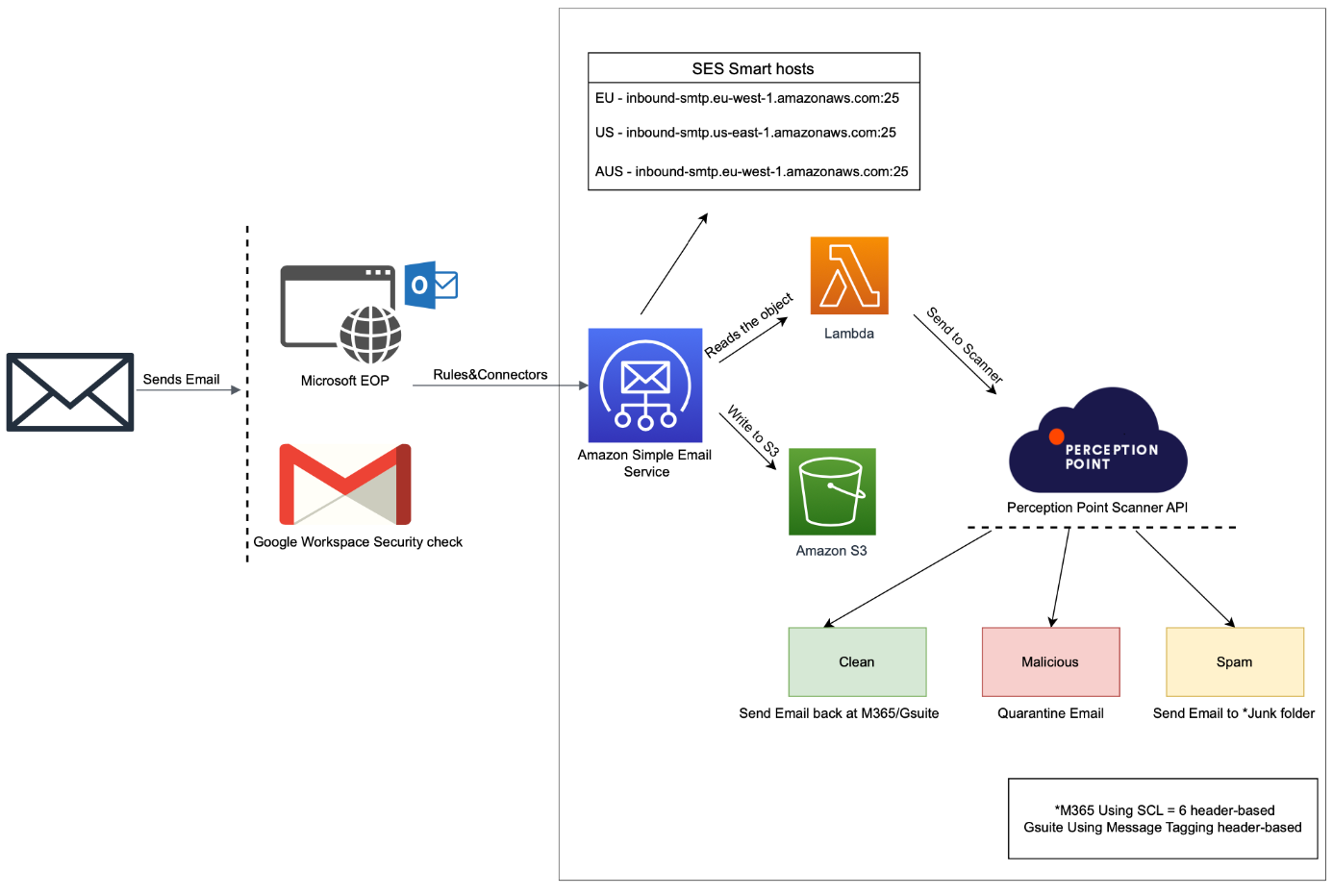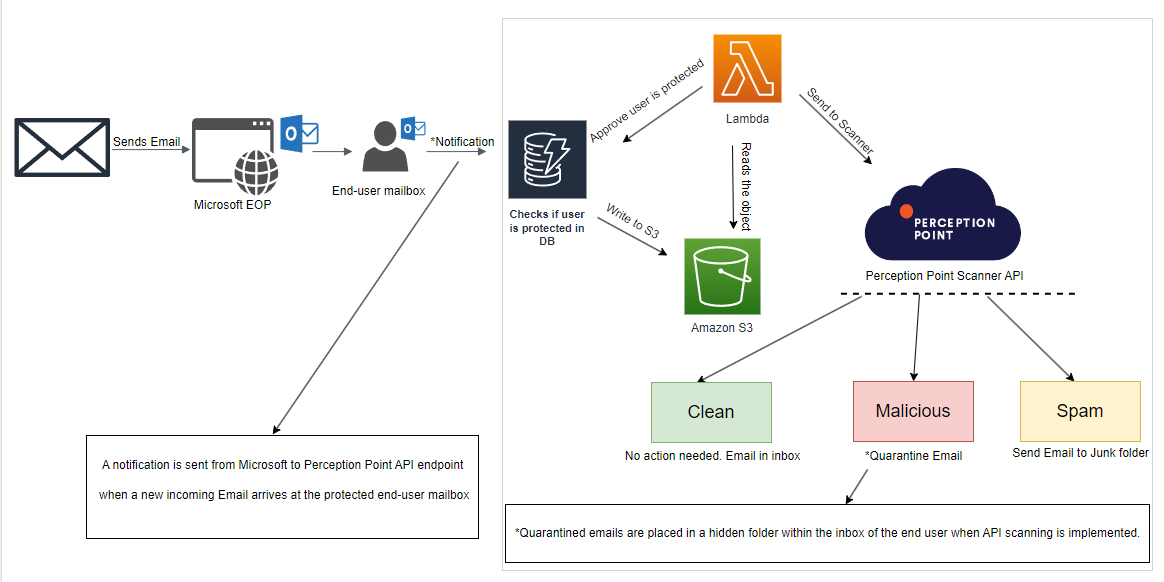Connecting Microsoft 365
This page includes:
About connecting Microsoft 365 email services
You can integrate Perception Point X‑Ray with Microsoft 365. This enables Perception Point X‑Ray to protect incoming mail into a Microsoft 365 installation. [This refers to Microsoft Exchange Online]
When you integrate Perception Point X‑Ray with Microsoft 365, you can select either of the following integration methods:
|
Inline |
Emails are scanned [and can be blocked if they are found to be malicious] before they are delivered to the end-user inbox. Requires adding a TXT record to the DNS and then running an automated onboarding script. Includes a more complex onboarding process. For details, see Step 1 - Onboarding Microsoft 365 [Inline] |
|
Microsoft API |
Emails are scanned in parallel with the delivery of the email. The email first arrives in the end-user inbox, and only after scanning, is the email removed if it is found to be malicious. End users may therefore see malicious emails in their inboxes for a few seconds before the email is deleted. Doesn't require a TXT record. Includes a simple onboarding process. For details, see Onboarding Microsoft 365 [API] |
|
Note:
|
Comparing the Inline and API connection methods
The table below should help you to choose the better connection method for your scenario - Inline or API...
|
|
Inline |
API scanning |
|---|---|---|
|
|
Operates in prevention mode: Scans and blocks malicious emails pre-delivery |
Operates in detection and remediation mode: Scans emails in parallel with the delivery of the emails |
|
|
More complex onboarding procedure - typically requiring addition of a domain, verifying a TXT record, and running an automation script |
Simpler and quicker onboarding procedure - typically requiring just 3 mouse-clicks |
|
|
Requires adding a TXT record to the DNS |
Adding a TXT record is not required |
|
|
Adds an extra hop to the email |
Scans in parallel and therefore doesn't add a hop |
|
|
End users won’t see any emails with malicious scan verdicts in their Inboxes |
End users may see malicious emails in their Inboxes for a few seconds - before the scan is completed and the email is deleted |
|
|
Supports hybrid environments |
Supports only Microsoft 365 environments |
|
|
Allows remediation |
Allows remediation |
|
|
Supports scanning of inbound, internal, and outbound email |
Supports scanning of inbound and outbound email |
|
|
For details, see Step 1 - Onboarding Microsoft 365 [Inline] |
For details, see Onboarding Microsoft 365 [API] |
[Inline vs API]
Maximum email sizes for scanning
Microsoft 365 Inline integrations
Perception Point X‑Ray scans email messages up to a maximum size of 40 MB [including attachments]. Larger email messages are not scanned by Perception Point X‑Ray, and will be delivered to the specified recipients.
|
Note:
|
Microsoft 365 API integrations
Perception Point X‑Ray scans email messages up to a maximum size of 500 MB [including attachments].
Other Microsoft 365 connection options
-
If you have integrated Perception Point X‑Ray with Microsoft 365, you can enable the additional Perception Point X‑Ray-Microsoft 365 ATO [account take over] functionality. This functionality monitors your Microsoft 365 accounts to detect if any of them have possibly been taken over. For details, see Configuring Microsoft 365 - ATO detection.
See also:


